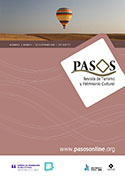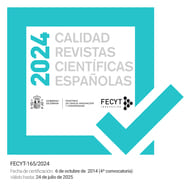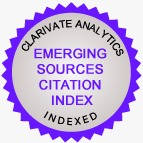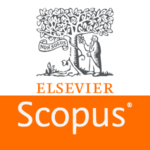Enogastronomic routes: the Ribeiro route
Keywords:
Tourist route, Oenology, Gastronomy, certificate of origin, RibeiroAbstract
The conservation of customs and gastronomic tradition facilitate the configuration of enogastronomics routes, observing a growing trend of these routes as driving forces in rural areas. In this way, gastronomy, as a heritage resource, enhances the economic development of rural areas, through tourist demand, adding value to the quality tourist offer. This study analyzes the impact of these routes on the tourism system of the Comarca do Ribeiro. The exceptional nature of the geographical space is complemented by unique and differentiated products, endorsed by Designations of Origin (DOs), Protected Geographical Indications (PGIs) and "Regulatory Councils", which are in charge of its normative defense, protection, differentiation and strengthening before the consumers, interest groups and society as a whole. Based on these complementary characterizations of food and wine routes, we will elaborate and identify their strategic profile, as well as a competitive analysis of the route, from the tourist point of view.
Downloads
Publication Facts
Reviewer profiles N/A
Author statements
- Academic society
- PASOS. Revista de Turismo y Patrimonio Cultural
- Publisher
- Instituto Universitario de Investigación Social y Turismo. Universidad de La Laguna (España) - Instituto Universitario da Maia ISMAI (Portugal)
References
Ansón Oliart, R. (2015). Visión global de la gastronomía en el siglo XXI. Discurso Académico de Ingreso. Real Academia de Gastronomía.
Armesto López, X.A.; Gómez Martín, B. (2004) Productos agroalimentarios de calidad, turismo y desarrollo local: El caso Priorat. Cuadernos Geográficos, n.34, pp. 83-94.
Barrera, E. (2006) Rutas Alimentarias. Estrategias culturales de desarrollo territorial. Patrimonio Cultural y Turismo, n.15, Itinerarios culturales y rutas del patrimonio. Conaculta, México.
Barrera, E., Brigas Alvarado, O. (2008) Las rutas alimentarias: una arquitectura turística basada en la identidad de los alimentos. Gastronomic Science, Vól. 3, n. 706, pp. 1-11.
Beni, M.C. (1998) Análise structural do turismo. Senac, São Paulo.
Boullón, R.C. (2006) Planificación del Espacio Turístico, Edit. Trillas., Mexico D.F.
Bueno Campos, E. (1987) Dirección Estratégica de la empresa: metodología, técnicas y casos. Edit. Pirámide, Madrid.
Decreto 85/2012 de 16 de febrero por el que se regula la señalización turística. Manual de señalización de Galicia.
Defert, P (1972) Essai de formulation d’une typologie intégrée des resources et activitiés tursitiques. 22º Congrés de L’AIEST, pp. 64-75, Gurten, Berna.
Elias Pastor, L.V. (2006) El turismo del Vino: Otra Experiencia de ocio. Documentos de Estudios de Ocio, nº30, Universidad de Deusto, Bilbao.
García Delgado, F.J, Felicidades García, J. (2014) Técnicas y herramientas aplicadas a la gestión de recursos turísticos. En Flores Ruiz, D. Manual de gestión de destinos turísticos, Tirant lo Blanch, Madrid, España.
González Reverté, F., Pérez Fernández E. (2007) Planificación y gestión de destinos y atracciones de turismo cultural. PID-00151142, Universitat Oberta de Catalunya
Gunn, C. A., & Var, T. (2002). Tourism planning : basics, concepts, cases. Routledge.
Hall, M. (2001) Planejamento turístico: políticas, procesos e relacionamentos. Contexto, São Paulo.
Hall, M., Sharples, L., (2003), The consumption of experiencies or the experiencia of the consumption? An introduction to the tourism of taste, en Hall at all, Food Tourism around the worl, Elservier.
Ho, P, McKercher, B. (2004) Managing heritage resources as tourism products. Asia Pacific journal of tourism research, v.9, pp. 255-266.
ICOMOS (2008) Carta para interpretación y presentación de sitios de patrimonio cultural. International Council on Monuments and Sites, Canadá.
Jeamby, Z. (2016) Rutas gastronómicas y desarrollo local: un ensayo de conceptualización en Cataluña. Pasos, Revista de turismo y patrimonio cultural. Vól. 14, n.5, pp. 1187-1198.
López Benítez, A. (2004) Del Estatuto del vino a las Leyes del vino: un panorama actual y de futuro de la ordenación vitivinícola en España. Thomson-Civitas, Madrid.
Millán Vázquez de la Torre, M.G., Agudo Gutiérrez, E.M. (2010) El turismo gastronómico y las denominaciones de origen en el sur de España: Oleoturismo. Un estudio del caso. Pasos, Revista de turismo y patrimonio cultural. Vol.8, n.1, pp. 91-112.
Ministerio de la Presidencia y para las Administraciones Territoriales (2003) Ley 24/2003 de 10 de julio, La viña y el vino.
Morales Miranda, J. (2001) Guía práctica para la interpretación del patrimonio. Consejería de Cultura de la Junta de Andalucía, Sevilla
Oliveira dos Santos, G. E. (2007) Modelos teóricos aplicados al turismo. Estudios y perspectivas de turismo. v.16, pp. 96-110.
Parlamento Europeo (2014) Patrimonio Gastronómico Europeo, aspectos culturales y educativos. Informe 2013/2181, Comisión de cultura y Educación.
Pümpin (1986) Management Estratégico, Edit. Esic.
Ripollés Meliá, (1991) Matrices estratégicas, su utilidad para las pymes….
Schlüter, R., Thiel, D. (2008) Gastronomía y turismo en Argentina. Polo gastronómico Tomas Jofre. Pasos, Revista de turismo y patrimonio cultural. Vol.6, n. 2, pp. 249-268.
Tresseras, J., Medina, X. (2007) Patrimonio gastronómico y turismo cultural en el Mediterráneo. Colección turismo cultura IBERTOR, Barcelona
Downloads
Published
How to Cite
Issue
Section
License
Copyright (c) 2023 Maria-Montserrat Cruz-González, Francisco-Javier Sánchez-Sellero, Vanessa Suarez-Porto

This work is licensed under a Creative Commons Attribution-NonCommercial-NoDerivatives 4.0 International License.
I confirm that the work is original (of my/our authorship), and that it will not be submitted to other journals or publications until the final resolution of the review process in PASOS, RTPC.
I authorize the publication of my work by PASOS, PSTN of free and open access in any of the formats that I deem appropriate, for an indefinite period of time and as a non-remunerated collaboration.
Likewise, the author(s) understands that the published work may be linked or deposited on any server or included in other publications (republication), provided that the new place and/or new edition references the original publication and acknowledges the authorship and copyright ownership of PASOS RTPC publications.
Authors understand that a plagiarism-self-plagiarism check will be performed, and the article may be removed at any time from the editorial flow.






